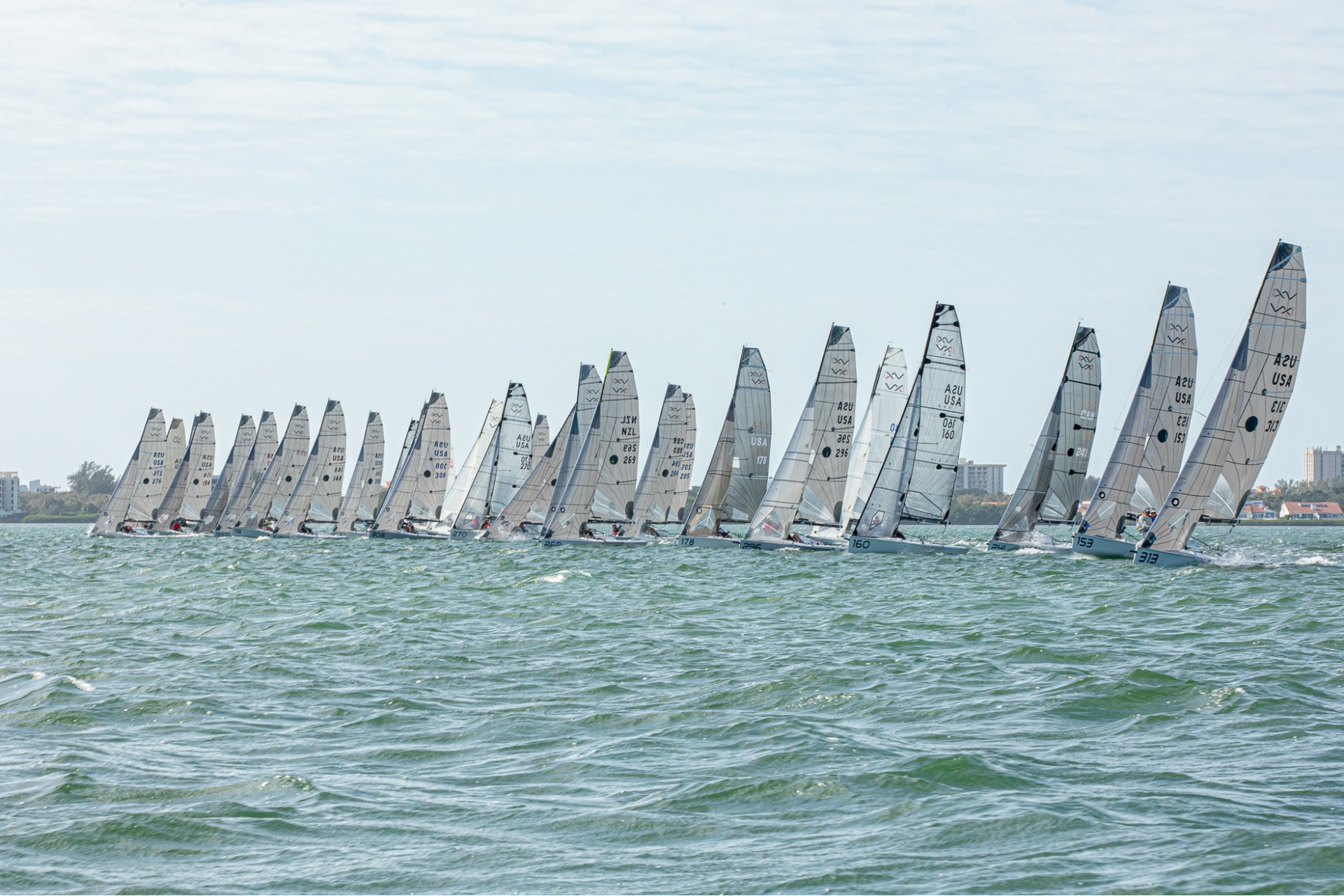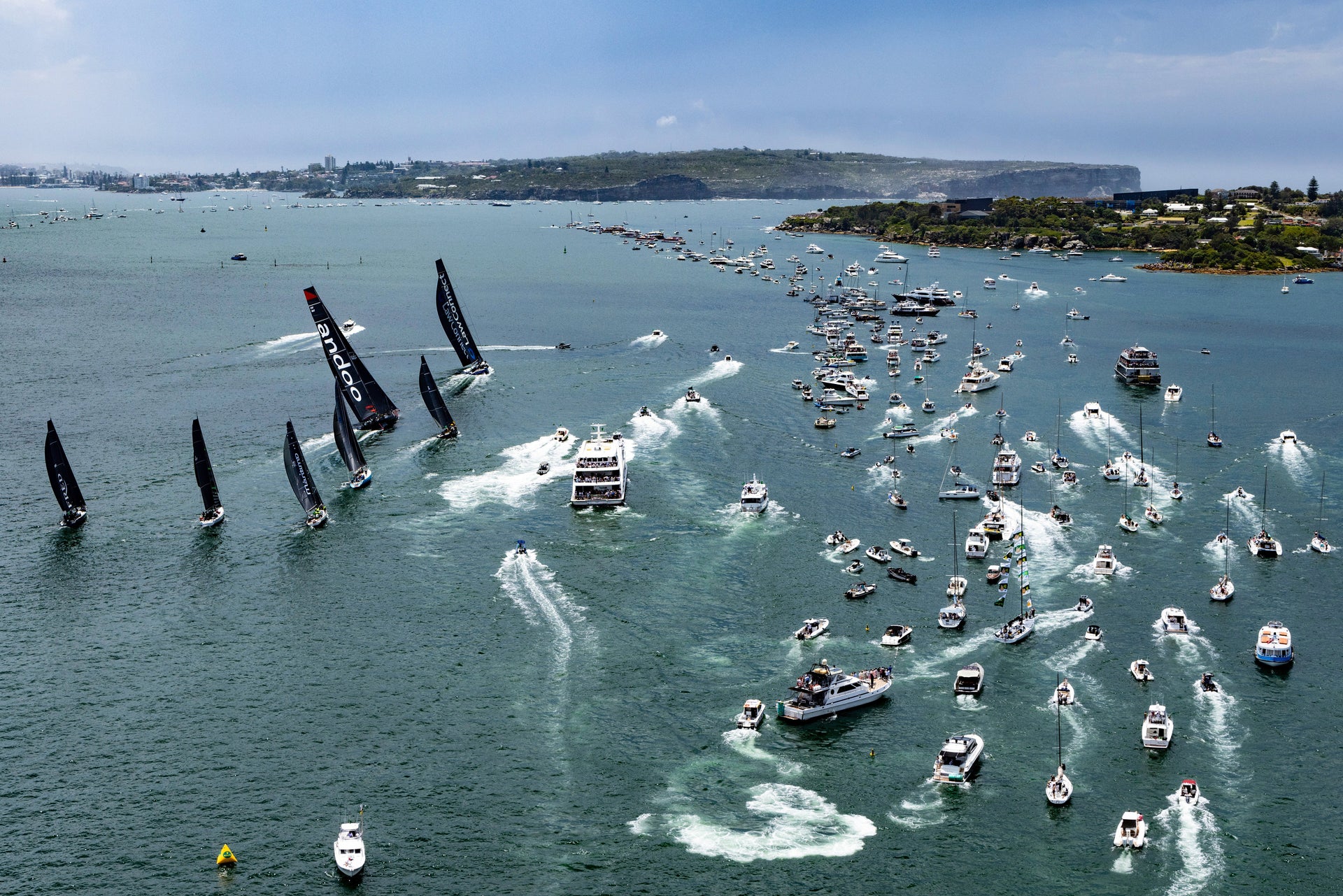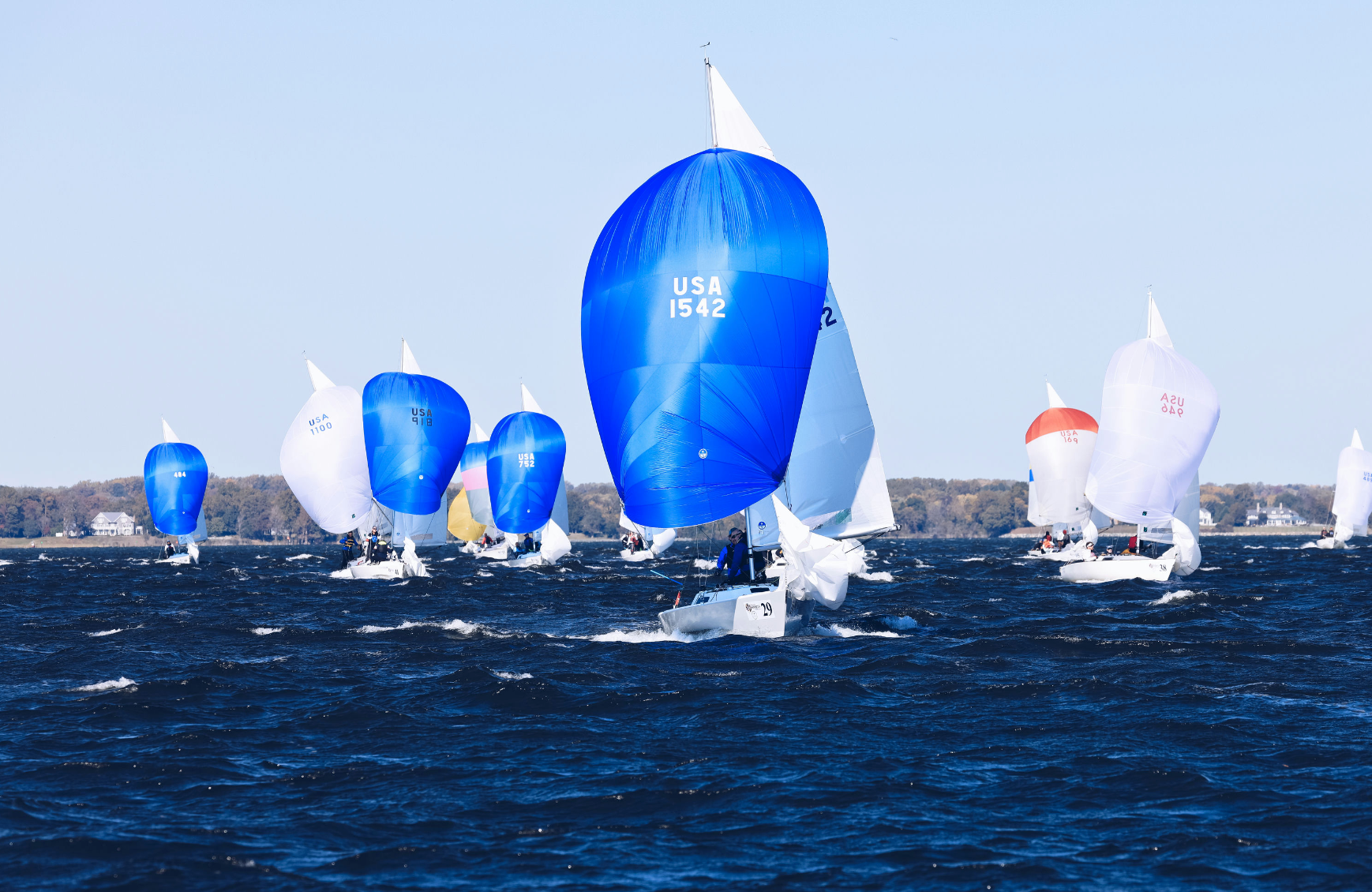THE NUMBERS AT THE VX ONE MIDWINTERS
THE NUMBERS AT THE VX ONE MIDWINTERS
On-the-Water Observations

The VX One is a rewarding boat because it is easy to set up, straightforward to sail, and attracts a uniquely fun group of sailors. With simplicity, however, comes the need to absolutely master each possible variable in order to get an edge on the fleet. During the Midwinters in Sarasota last month, VX One North American champion and North Sails sail designer Madeline Gill spent time on and off the water observing the setups of other teams and listening to what they had to say about it. Here are her thoughts:
Looking around the course, it was clear to me that boat setup was anything but uniform. Easiest to note were some of the basic details, like sail trim or leeward cap shroud tension (slack.) But, some of my other observations prompted me to do some more in-depth research after the racing was over. My major hypotheses were:
- When it comes to using ‘relatives’ to compare performance, heel angle is a better indicator of net gains or losses than pointing angle is.
- In most raceable conditions, getting the main as flat as you can is key to both getting off the start line ahead and extending your lead throughout the race.
Relative Performance
As the middle crewmember on a team with the driver trimming the main, one of my primary responsibilities upwind was to gather data. Keeping my head out of the boat and feeding constructive information to the team exercised my brain as much as hoisting, trimming, and dousing the spinnaker exercised my body.
As I have always been taught, I would relay information about our boatspeed and pointing angle relative to boats across the course. If the combination wasn’t a clear net gain or loss scenario, I would include my best guess with that regard. For example, if we were pointing a little bit lower, but going a lot faster, I would say, “lower, faster, net gain to us.”
Enter MONKEY WRENCH center stage.
I kept finding myself in situations where my conventional system would lead me astray. There would be a boat near us that we were pointing higher than and going the same speed as. This is a clear net-gain-to-us, no-need-to-even-mention-it situation, right? Not so fast. Next time I checked in, we would still be pointing higher and going a similar speed to them, but they had climbed off our windward hip, building gauge to windward and clearly having gained on us. The most glaring difference was that we were maintaining a few degrees more leeward heel than they were.
My realization at that point was that establishing and maintaining attached flow over the keel and rudder is majorly important. The shorter the cord length of a foil is, the more significant impact one unit of detached flow has. The angle of heel, and its subsequent hydrodynamic impact, is vital factor in VMG performance. As is always true, keeping the boat flat minimizes leeway, allows boatspeed to increase, and leads to better pointing angles. But the quantity of that impact is amplified in the VX One, thus my conclusion that, in conjunction with boatspeed, relative heel angle is a more valuable determinant in overall performance than relative pointing angle is.
Flat Sails
In general, we spend so much time talking about how to get the right shape in the right place in our sails, but when it comes to removing the shape, we sometimes forget that there is the same discussion to be had. Tighten the rig, put all of the sail controls on, and pull the mainsheet like your potential world’s strongest person sponsor is watching. Do you see overbend wrinkles extending from the mast toward the clew? Great. But don’t stop the conversation there.
Achieving overbend wrinkles in the main is a good indicator that you are taking power out of the sail and reducing aerodynamic drag on your boat.
Achieving overbend wrinkles in the main is a good indicator that you are taking power out of the sail and reducing aerodynamic drag on your boat. If you are still unable to maintain a flat boat, tighten the cap shrouds more, make sure the checks aren’t keeping the bottom of the main from getting flat enough, and put more tension on the vang. Depowering the bottom of your main is a good starting point, but if you are struggling with too much leeward heel, you should be trying to spread that flatness up the sail where the same amount of power has greater heel-inducing ability.
The Evidence
As it turns out, the event photos hold some nice examples that lend credence to my hypotheses.



The photo at the top of this article is a particularly good illustration of heel angles. I went through and measured the heel angle of nearly every boat on the line and grouped them by approximate row location. Sure enough, our Midwinter Champions in 269 are not only in the front row and sailing in clear air, but are notably flatter (≥2°) than every other boat in a similar position. In other words, Hayden and Mike were sailing their boat with 10%-15% less leeward heel than everyone else in the front row.

Next, I hunted for upwind images of some top teams (isolating variables and choosing only teams using the same sails, of course.) The red triangles are where the overbend wrinkles on each main are dominating the shape landscape. The overall coverage is 30% of the area on 269 (extending 61% up the luff and 68% down the foot,) 20% of the area on 171 (extending 50% up the luff and 55% down the foot,) and 10% of the area on 276 (extending 20% up the luff and 67% down the foot.)
By extracting this data from the photos, we can see that the event leaders were sailing with a flatter boat and flatter sails than most.
By extracting this data from the photos, we can see that the event leaders were sailing with a flatter boat and flatter sails than most. And although each photo captures but a fleeting moment in time, I think it is safe to say these observations are more likely to be reflective of each team’s typical setup than not. Next time you’re setting up to go for a rip on your VX One, try focusing on (1) achieving as flat a heel angle as you can consistently sustain and (2) growing and shifting the flatness in your sails.























